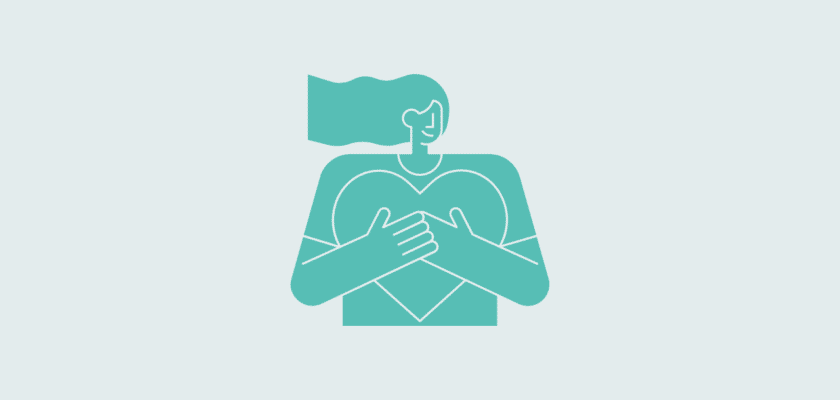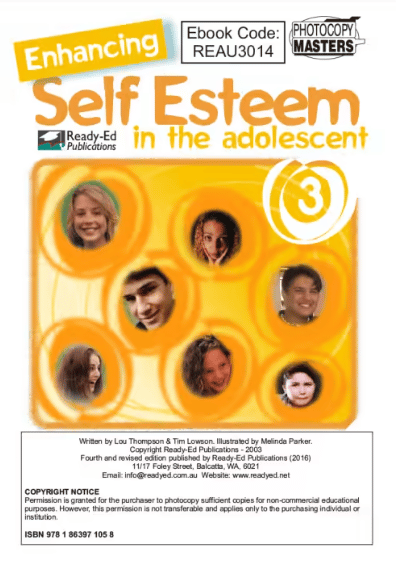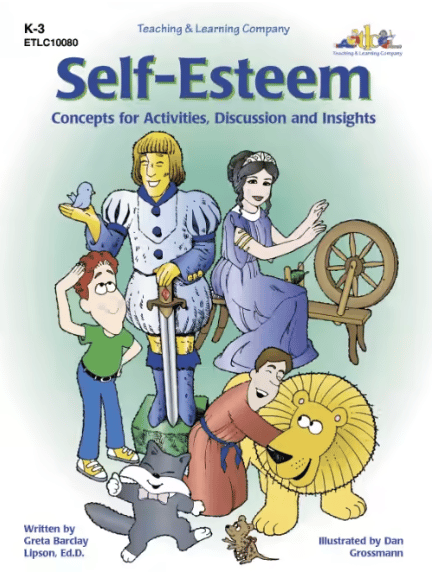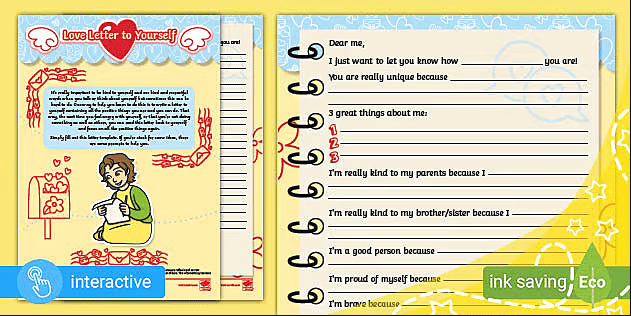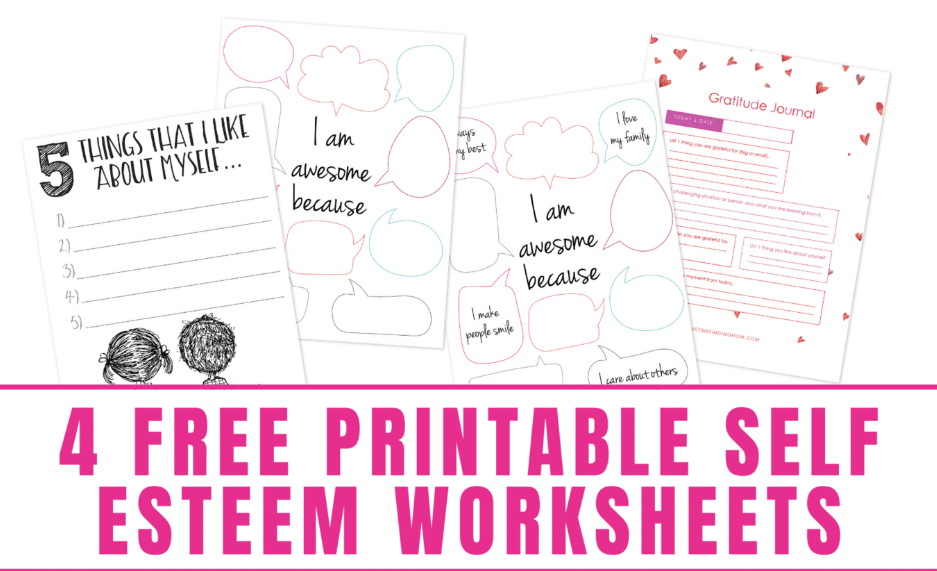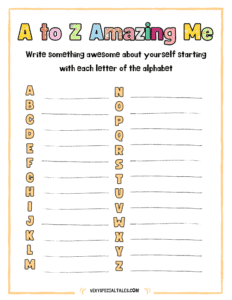In today’s education system, fostering a positive self-image in students is as critical as the academic curriculum. When we talk about ‘self-esteem,’ we refer to a student’s overall sense of their value or worth. It’s the ability to acknowledge one’s strengths and weaknesses while maintaining a positive view of oneself. Low self-esteem can hinder a student’s ability to learn and perform, leading to negative thoughts and a lack of motivation.
Public school teachers and homeschoolers alike have a crucial role in cultivating self-esteem in their students. One powerful intervention they can use to achieve this aim is self-esteem worksheets. These worksheets are simple yet effective CBT (Cognitive Behavioral Therapy) tools that can help students understand their feelings, challenge negative thoughts, and foster a positive self-image.
Table of Contents
- Uncovering the Uniqueness of Self Esteem Worksheets
- The Crucial Role of Self-Esteem Worksheets in Overcoming Low Self-Esteem in Education
- Effective Components of a Good Self Esteem Worksheet
- The Best Self Esteem PDF Worksheets: Emphasizing Self-Worth
- How to Harness the Power of Self-Esteem Worksheets for Behavioral Change
- Supplemental Tools for Bolstering Self-Esteem and Overcoming Low Self-Esteem
- Conclusion: Embrace Uniqueness with Self-Esteem Worksheets
Uncovering the Uniqueness of Self Esteem Worksheets
Self-esteem worksheets are carefully designed educational materials that focus on helping individuals identify their feelings and thoughts, particularly concerning their self-worth. These worksheets often come in the form of downloadable PDFs and are structured to guide students through exercises aimed at boosting self-esteem.
A common misconception is that these worksheets are solely for use by therapists in a clinical setting. However, teachers and homeschoolers can incorporate them into their teaching practices as part of a broader effort to promote mental health and emotional wellbeing in the classroom. Self-esteem worksheets encourage students to acknowledge their strengths and counter negative thoughts, helping them develop resilience and a positive self-perception.
These exercises may involve different activities, such as journaling, drawing, goal setting, or even mindfulness exercises, and often follow the principles of Cognitive Behavioral Therapy (CBT). CBT is a popular form of therapy that aids in understanding and changing thought patterns leading to negative behaviors or feelings, such as low self-esteem.
The Crucial Role of Self-Esteem Worksheets in Overcoming Low Self-Esteem in Education
As educators, we strive to not only impart knowledge but also to nurture well-rounded individuals who are equipped with the mental and emotional fortitude to navigate life’s challenges. This is where self-esteem worksheets come into play.
These resources serve as valuable teaching tools, providing structured exercises that aid students in comprehending and enhancing their self-esteem. A robust sense of self-worth contributes positively to a student’s mental health, resilience, and overall satisfaction in life.
One of the most prevalent issues students face today is low self-esteem, which can lead to a lack of confidence, increased susceptibility to peer pressure, fear of failure, and even depression. By integrating self-esteem worksheets into the educational curriculum, we equip students with the tools to combat negative thoughts and emotions.
These worksheets encourage introspection, providing a platform for students to recognize and appreciate their abilities and accomplishments. They also help them identify areas for improvement without fostering feelings of inadequacy. The ultimate aim is to develop individuals who believe in their potential and are empowered to reach their goals.
In addition, self-esteem worksheets aren’t confined to a specific age group. They can be adapted for students across different age groups, making them versatile tools in promoting mental and emotional wellbeing.
Effective Components of a Good Self Esteem Worksheet
When it comes to self-esteem worksheets, not all are created equal. There are several components that an effective worksheet should incorporate to yield the best results.
Incorporating CBT in Self-Esteem Worksheets:
Cognitive Behavioral Therapy (CBT) is a form of psychotherapy that is widely used for improving self-esteem. A CBT-based worksheet will often encourage the students to challenge their negative thoughts and replace them with positive affirmations, leading to a healthier self-perception.
The Interactive Component in Self-Esteem Worksheets:
A good worksheet must be interactive. It should contain various exercises that demand active participation from the students, thus fostering deeper engagement and better outcomes.
Exercise: The Interactive Component in Self-Esteem Worksheets
A worksheet should have interventions that specifically aim to enhance self-esteem. These may include exercises that aid in acknowledging personal strengths, setting and achieving personal goals, or dealing with criticism constructively.
The Advantage of PDF Self-Esteem Worksheets:
A downloadable PDF format is highly recommended as it allows for easy sharing, printing, and accessibility, catering to both classroom and remote learning settings.
Therapist-Guided Self-Help: Maximizing the Effectiveness of Self-Esteem Worksheets
While not always necessary, worksheets that are designed to be used under the guidance of a therapist or a counselor can provide additional benefits. The therapist can provide professional insights, identify potential issues, and guide students through the process more effectively.
These components work together to create an engaging and beneficial tool that promotes self-esteem in students.
The Best Self Esteem PDF Worksheets: Emphasizing Self-Worth
With a plethora of resources available online, it can be a daunting task to sift through and find the best self-esteem worksheets. Here are some reputable sources: Teach Simple’s Collection offers a vast range of downloadable educational materials, including a wide variety of self-esteem worksheets. All resources are created by experienced educators and are tailored to meet the needs of both public school teachers and homeschoolers.
It is important for a student’s personal and academic growth to help them build confidence and self-esteem. These traits can affect how they get along with their classmates and deal with problems in and out of school. If you want to help your students feel better about themselves, our worksheets and activities on self-esteem can help.
These worksheets are meant to help students recognize and challenge negative thoughts, set and reach goals, and develop a more positive and confident view of life.
Examining Self-Esteem in the Young: Book 1 By Ready-Ed Publications
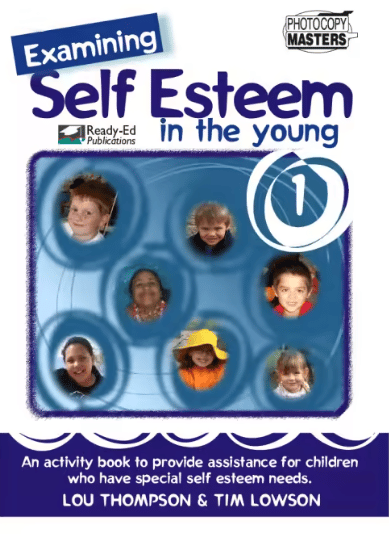
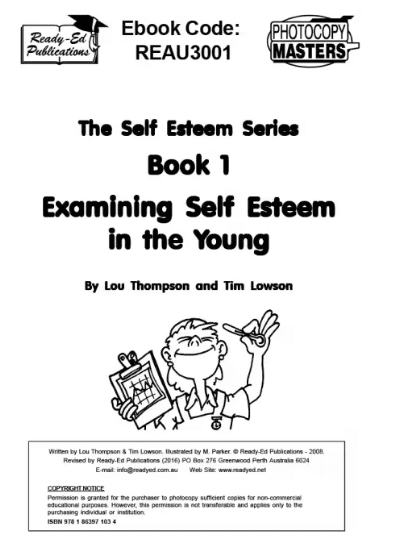
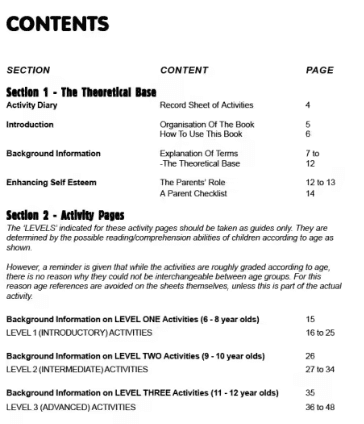
Aimed at students from kindergarten up through fourth grade, this mega resource is great for kids with special self esteem needs. Students can work their way through introductory, intermediate, and advanced activities geared to bolster developing self-esteem.
Examining Self-Esteem in the Young: Book 2 by Ready-Ed Publications
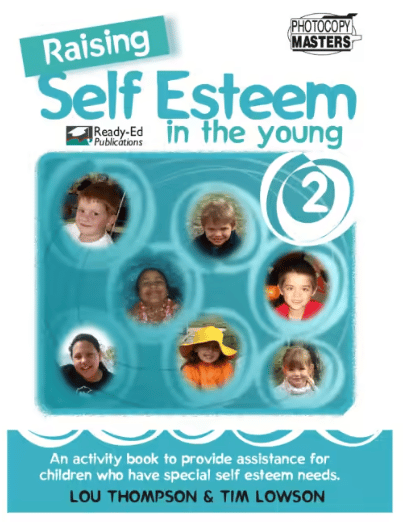
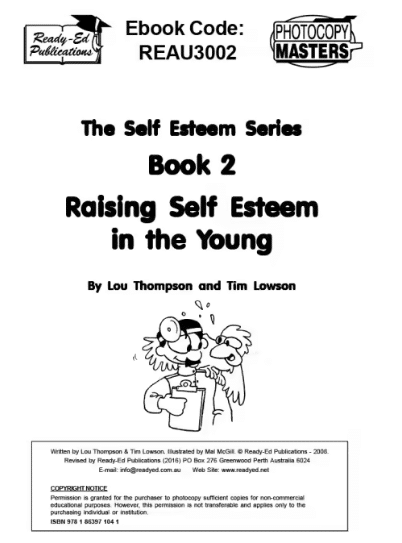
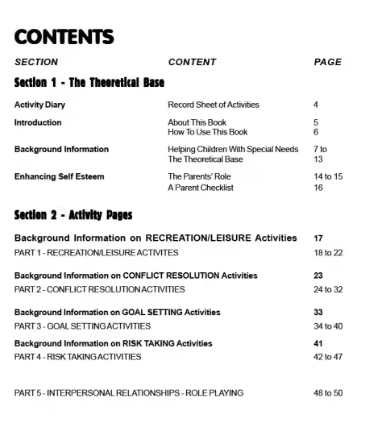
Continuing off of Lou Thompson and Tim Lowson’s guidance, book 2 gives students 51 more pages of self-esteem activities to work their way through. You’ll find topics such as what role parents’ should play in developing children’s self esteem, recreation and leisure activities conducive to good self esteem, and interpersonal relationship skills.
Examining Self-Esteem in the Adolescent: Book 1 By Ready-Ed Publications
Self esteem is a lifelong skill to build on. Thompson and Lowson continue their work in their series with this 56-page resource aimed at students in grades 5 through 8. It’s loaded with activities for kids to explore healthy self esteem. Main topics include knowing yourself, conflict resolution, goal setting, risk taking, and more.
Self-Esteem: Concepts for Activities, Discussion and Insights By Classroom Complete Press
This resource for students in grades 1 through 3 was designed by doctor of education Greta Barclay Lipson. In it, you’ll find activities as well as stories and discussions to improve your students’ self respect.
Love Letter to Myself Worksheet By Twinkl
You can remind yourself of all the excellent in you by creating a letter to yourself that is positive and that you can read whenever you are having these negative thoughts.
Build your self-esteem. Notice your strengths By Art Of It
This free worksheet contains 8 categories, each with three blanks for students to fill in. Categories include positive qualities about students’ characters, bodies, skills, points of pride, things and people to be grateful for, obstacles overcome, and compliments received. Challenge your students to come up with 3 new items for these categories daily!
Self-Esteem and Character Building Worksheets for Kids and Teens by Mylemarks
Here’s another free printable for your students to work on. It lists 20 “I am” statements such as “I am liked by others,” “I am talented,” and “I am confident.” Students can give themselves a rating for each statement ranging from 1 through 5 to denote where they fall on the spectrum between strongly agree and strongly disagree.
4 Free Printable Self Esteem Worksheets By Freebie Finding Mom
Kelli Bhattacharjee, blogger behind Freebie Finding Mom brings us these 4 free self esteem worksheet printables for young kids. One is for listing things the child likes about themselves, one features fun speech bubbles to fill in after the prompt, “I am awesome because,” with a matching sheet that lists some good examples, and one is a gratitude journal.
A to Z Amazing Me by very Special Tales
This simple worksheet features each letter of the alphabet with an accompanying blank space. The worksheet prompts students to “write something awesome about yourself starting with each letter of the alphabet.” Check out Clara Muriel’s blog Very Special Tales for even more self esteem activities and games for kids and teens.
Remember, the key to success with these worksheets is consistency and patience. Progress may not be immediately evident, but with regular use, these worksheets can help students understand and improve their self-esteem.
How to Harness the Power of Self-Esteem Worksheets for Behavioral Change
When it comes to utilizing self-esteem worksheets, there are several steps that teachers and parents can take to ensure they are used effectively.
- Set Clear Aims: Before starting with any worksheet, set clear objectives for what you want to achieve. The aim could be to help the child understand their worth or to change a specific negative thought pattern.
- Acknowledge Progress: While working on self-esteem, it’s important to acknowledge even small improvements. Celebrate these small victories to boost the child’s morale.
- Regular Practice: Like any other skill, improving self-esteem requires regular practice. Make sure to incorporate these worksheets into your weekly routine.
- Encourage Honest Responses: Encourage children to be honest while answering these worksheets. Honest responses will give them better insights and make the intervention more successful.
- Be Patient: Improvement in self-esteem won’t happen overnight. Be patient and continue the exercises. Over time, you will notice significant improvements.
By following these steps, you’ll be on the right path to effectively using self-esteem worksheets and will start to see improvements in the child’s self-esteem.
Supplemental Tools for Bolstering Self-Esteem and Overcoming Low Self-Esteem
While self-esteem worksheets provide an excellent resource for improving a child’s self-worth, they are just one part of a broader intervention strategy. Here are some additional resources you can incorporate:
- Therapist-guided sessions: A trained therapist can help guide children through their negative thoughts and emotions and provide more personalized strategies for improving self-esteem.
- Cognitive Behavioral Therapy (CBT): CBT is an evidence-based psychological treatment that’s been proven effective for a range of problems, including low self-esteem. It helps individuals identify and challenge their destructive thought patterns and behaviors.
- Books on self-esteem: There are numerous books available that are designed to help children understand and improve their self-esteem. Some great examples include “I Like Myself!” by Karen Beaumont and “The Confidence Code for Girls” by Katty Kay and Claire Shipman.
- Online Platforms: Websites like Teach Simple offer an array of digital resources that can be downloaded and used by both public school teachers and homeschoolers. These resources provide creative and innovative ways to enhance learning and improve self-esteem.
By combining self-esteem worksheets with these additional resources, you can provide a comprehensive approach to boosting a child’s self-esteem.
Conclusion: Embrace Uniqueness with Self-Esteem Worksheets
Building self-esteem is a crucial aspect of child development. It influences their outlook on life, resilience, and overall mental wellbeing. As educators and parents, it’s our responsibility to acknowledge the aim of developing a healthy sense of self-worth in our young ones. Self-esteem worksheets are an invaluable tool in this endeavor, especially when supplemented with other resources like therapist-guided sessions, cognitive behavioral therapy, relevant literature, and comprehensive online platforms. In the end, remember this: Every child has within them the potential for greatness. By equipping them with the right tools and resources, we can help them unearth that potential and let their self-esteem flourish.
